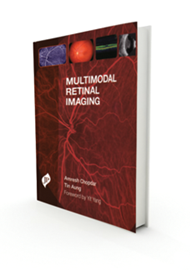Understanding of rapidly advancing retinal imaging techniques is important as they have changed the management of retinal conditions considerably. Interpretation of these tests is a vital skill in the armamentarium of every practising ophthalmologist.
The book is directed at general ophthalmologists and doctors in training for a good, up-to-date overview of the subject. It is well illustrated and written in a consistent format by multiple authors.
The book is organised into two main parts. In the first part, imaging techniques like fluorescein and indocyanine green angiography, optical coherence tomography, ocular echography, autofluorescence imaging and optic nerve head imaging are discussed in seven chapters. Principles and techniques of angiography and optical coherence tomography are outlined.
The chapter on ocular echography not only describes the principles but also details the techniques of examination, which is particularly useful for trainee ophthalmologists and allied professionals. Scanning laser ophthalmoscopy and clinical applications have been summarised. Setting up of an imaging centre, policies, operational issues and staff management are also discussed.
The second part focuses on assessment of some common conditions like age-related macular degeneration, vascular disorders, diabetic retinopathy and some uncommon conditions like dystrophies and neoplasms. The chapters succinctly cover pathophysiology, clinical presentation and findings on various modalities of angiography and imaging. Imaging techniques for disc assessment in glaucoma are compared and presented in a separate chapter. Many common vitreoretinal conditions which were omitted from the book could have been included to make it more comprehensive.
The book is concise with an attractive layout and good quality clinical pictures, making it easy to read and useful for trainee ophthalmologists.




